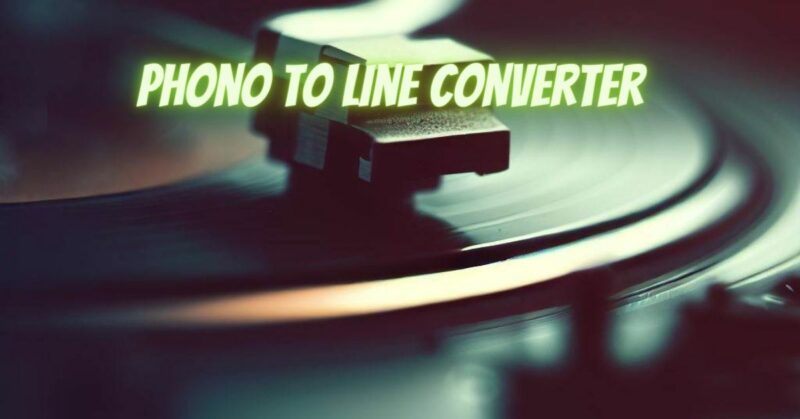Connecting a turntable to audio systems or amplifiers that lack a dedicated Phono input can be a challenge. However, with the help of a Phono to Line converter, you can bridge the gap and enjoy the rich sound of your vinyl records on any audio system. In this article, we will delve into the functionality and advantages of a Phono to Line converter, providing insights into how it facilitates seamless connections between turntables and line-level inputs.
Understanding the Phono to Line Converter: A Phono to Line converter, also known as a phono preamp or phono stage, is a device designed to convert the low-level phono signal from a turntable to a line-level signal compatible with audio systems and amplifiers that lack a dedicated Phono input. The converter performs the necessary amplification and equalization to ensure accurate playback of vinyl records.
- Signal Amplification: One of the primary functions of a Phono to Line converter is to amplify the low-level phono signal produced by the turntable’s cartridge. Phono signals are significantly weaker than line-level signals, which are typically generated by CD players, streaming devices, or other audio sources. The converter boosts the phono signal to match the higher input level required by line-level inputs.
- Equalization: Vinyl records have a specific frequency response curve known as the RIAA curve. This curve compensates for the limitations of cutting and reproducing records, resulting in accurate sound reproduction. Phono to Line converters incorporate the RIAA equalization curve, ensuring that the frequency response of the vinyl playback is correctly restored during the conversion process. This preserves the intended tonal balance and fidelity of the music.
- Compatibility and Versatility: A Phono to Line converter enhances compatibility between turntables and audio systems or amplifiers without Phono inputs. It allows you to connect your turntable to line-level inputs, such as AUX, CD, or Tape inputs, found on most audio systems. This versatility enables you to enjoy your vinyl collection through various audio setups, including home theater systems, powered speakers, or stereo receivers.
- External and Built-In Options: Phono to Line converters are available in both external and built-in formats. External converters are standalone units that connect between the turntable and audio system, offering flexibility and portability. Built-in converters, on the other hand, are integrated into certain turntable models, eliminating the need for an external converter. These options cater to different setups and personal preferences.
- Improved Sound Quality: Using a Phono to Line converter allows you to take advantage of the superior sound quality that vinyl records can offer. By correctly amplifying and equalizing the phono signal, the converter ensures accurate playback and preserves the unique warmth, depth, and dynamics associated with vinyl recordings. It enables you to fully experience the richness and nuances of your vinyl collection on any audio system.
Conclusion:
A Phono to Line converter is an indispensable tool for connecting turntables to audio systems or amplifiers lacking dedicated Phono inputs. By amplifying the phono signal and applying the necessary equalization, the converter ensures proper playback of vinyl records and maintains their inherent audio quality. Whether you opt for an external converter or a turntable with a built-in converter, this versatile device unlocks compatibility, allowing you to enjoy the immersive sound of vinyl across a wide range of audio setups. Embrace the convenience and enhanced connectivity provided by a Phono to Line converter to fully immerse yourself in the world of vinyl music.


